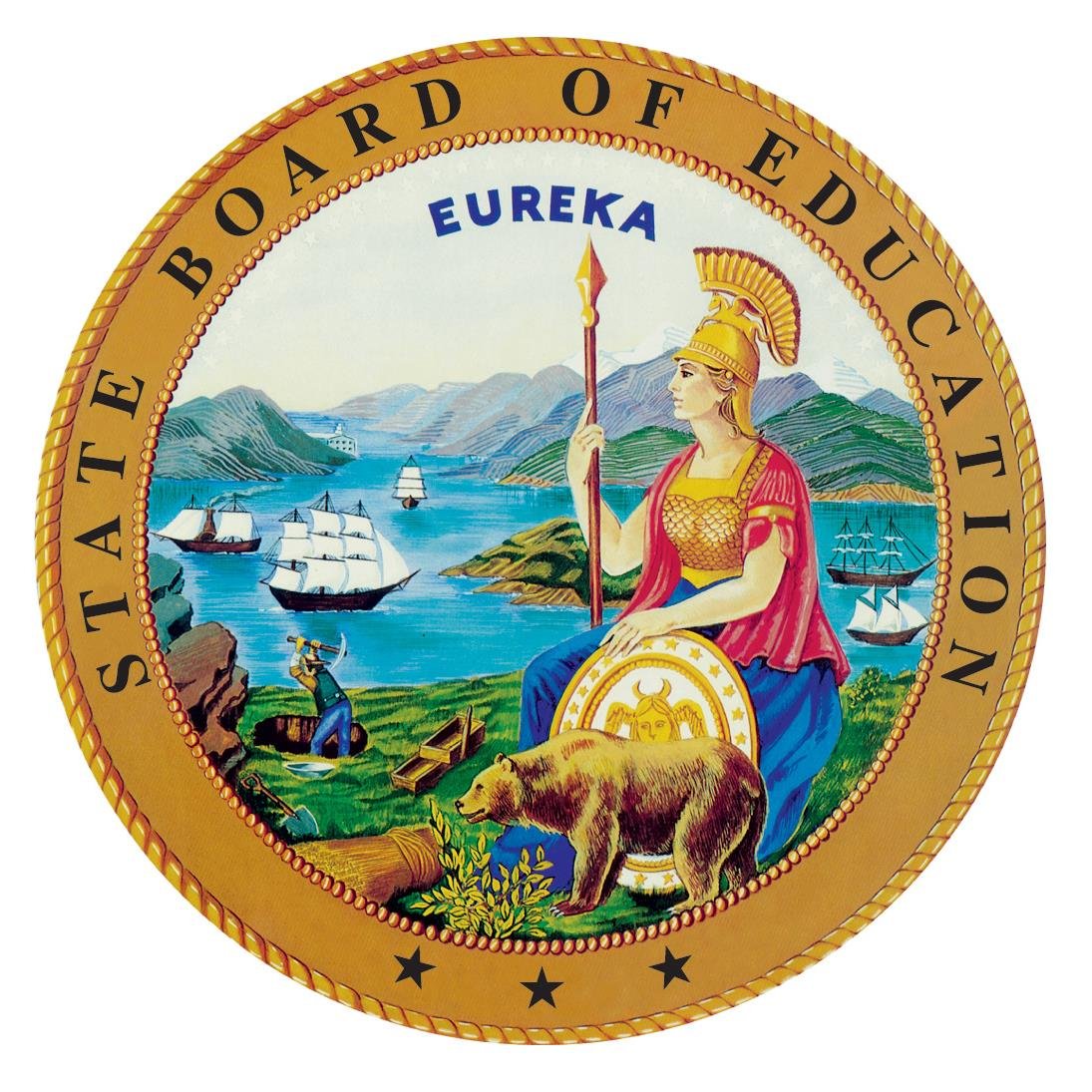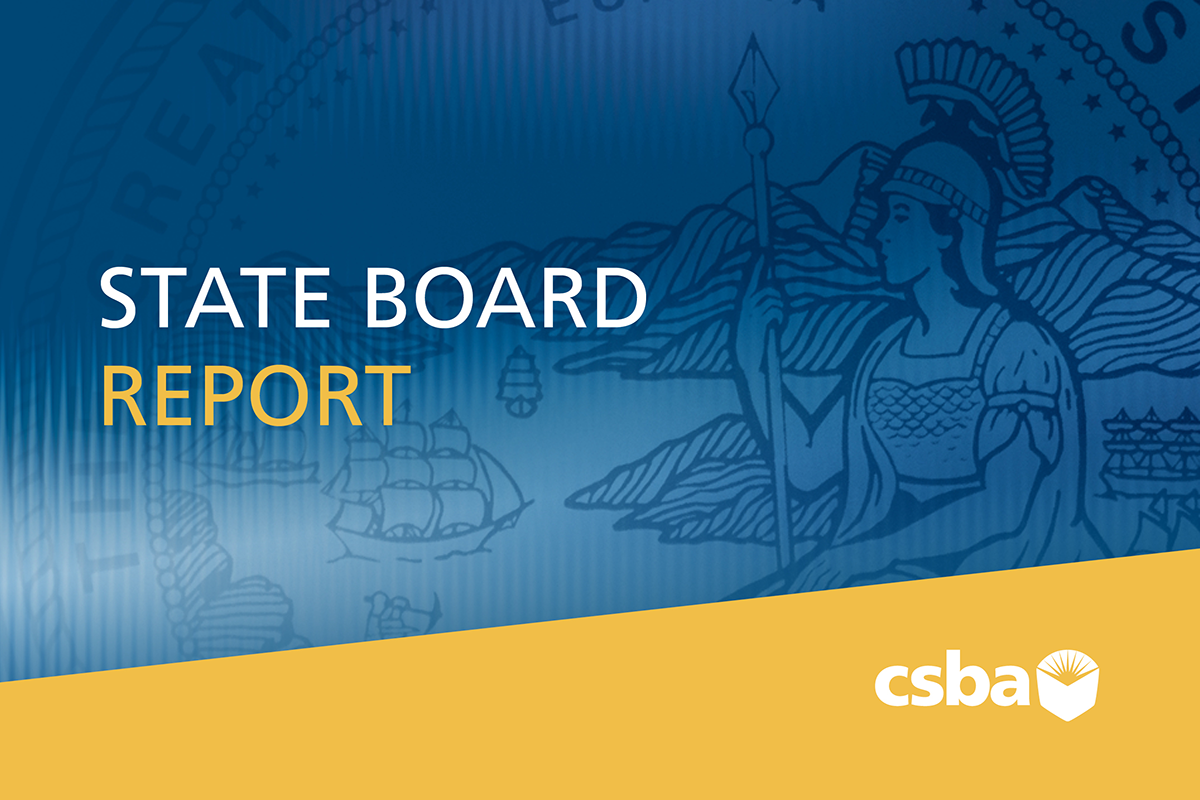The State Board of Education’s virtual May 12–13 meeting overlapped with Gov. Gavin Newsom’s announcement that he was proposing $93.7 billion in Proposition 98 funding for 2021–22, with increases in spending on early learning, wraparound services, community schools, nutrition programs and extended learning opportunities in the May Revision.
State Board President Linda Darling-Hammond said during the board’s meeting that the funding would “in many ways, begin the process of reinventing our public education system from TK to college, with a whole child vision in mind.” Two items on the agenda also have the potential to push California’s education system to better serve all students and prepare them for the future, she said: the long-anticipated adoption of the student growth model and the adoption of digital learning guidance that can be used even as students return from distance learning to classroom-based instruction.
“We should not return to an old normal, we should accelerate systems change to an equitable, rigorous and transformative education,” Darling-Hammond said. “At this meeting, we will have the opportunity to support the evolution of our system in a number of exciting ways.”
California joins long list of states to measure student growth
After five years of engaging with stakeholders and exploring several different growth models, the CDE adopted a methodology that will add individual students’ progress on state standardized tests to the state’s school accountability system.
The “residual gain” model calculates differences between students’ predicted test scores and actual test scores, using previous English language arts and math scores, as well as the scores of all other students in the same grade. The State Board hired the test contractor Educational Testing Services to make technical adjustments in order to ensure the residual growth model would prove reliable and stable from year to year. The details of those technical adjustments can be found here.
Board member Cynthia Glover-Woods expressed excitement about the stability that this growth model brings to the data so that as local educational agencies are planning their Local Control and Accountability Plans, the data is stable enough to determine the correct course for students.
To get the most out of the data provided through the growth model, Board Vice President Ilene W. Straus said moving forward, the board will need to ensure LEAs are supported and understand the data when they use it to determine student supports and interventions.
The new growth model will only be applied to English language arts and math test scores in grades four through eight, as prior year data will not be available for third graders when they take their first Smarter Balanced exams, nor for students in grade 11, as they don’t take Smarter Balanced tests during their first two years of high school.
Though there are no definitive plans in place, the growth model data could eventually replace what the state now uses to measure student achievement, which compares the test results of the latest fourth graders with the previous year’s fourth graders, on the California School Dashboard. However, since the pandemic interrupted standardized testing both in 2020 and 2021, the first calculations using the new student growth model, incorporating three consecutive years of testing, won’t be released until December 2024.
Despite the delay, board member Patricia Rucker said the state now has the opportunity to move beyond using student performance solely for accountability purposes, and instead, get a deeper understanding of what is and isn’t working within the K-12 system.
“This is only a first step, we’re not done,” Rucker said. “With approval of this model there is still a great deal of work left to be done. The next question is, when we implement it, is it really giving us the information in the way we believed it’s going to provide to us? Is it reporting the data that we want to see?”
The U.S. Department of Education pressed California to adopt a growth model when it approved the state’s plan for complying with the Every Student Succeeds Act. According to the Data Quality Campaign, California and Kansas were the only states by 2020 that didn’t have such an indicator.
Board member Sue Burr highlighted the importance of communication in ensuring the data is meaningful, accessible and usable for stakeholders. “I think what’s going to be really important going forward for purposes of communication is, what does it mean at the end of the day at the individual student level, and what will this information mean to parents especially, and also to teachers who will want to use it for the diagnostic purposes,” Burr said.
Digital learning guidance adopted
The State Board also adopted the California Digital Learning Integration and Standards Guidance, a comprehensive document that includes guidance on implementing research-based virtual learning practices and assessments, as well as standards guidance for math, English language arts, literacy and English language development by grade level.
The document was a required deliverable under Senate Bill 98, which directed the Sacramento County Office of Education to develop a draft distance learning curriculum and instructional guidance for mathematics, English language arts and English language development in the era of distance learning.
However, this guidance is applicable beyond distance learning, Darling-Hammond noted, as students and teachers have more access to and expertise in using technology than they did prior to the pandemic.
She said this expansion “should not disappear, but be built upon to allow students to engage in research and inquiry with colleagues not only in their classroom but around the world; to participate in simulations of scientific phenomena; to use open education resources to develop products, tools and papers; to represent their ideas in multimedia forms; and to develop confidence in their skills.”
Gov. Gavin Newsom and other state leaders have said they expect campuses to reopen fully in the next academic year and have noted that the state authorization allowing remote learning during the pandemic expires at the end of June. Many LEAs, however, have expressed a desire to keep a digital learning model both as an option for families who want it and as a backup plan should virus cases spike again.
CSBA Chief Information Officer Troy Flint recently told Bay Area News Group reporters that having a variety of approaches at the ready to serve students is vital to ensuring education can continue not just during a pandemic, but during California’s wildfire season. In 2018 at the height of the Camp and Woolsy fires’ destruction, at least 180 school districts — with a combined enrollment of more than 1.1 million students — cancelled classes due to hazardous air quality from smoke and/or physical damage from massive wildfires.
Board member Glover-Woods said the guidance is a “great first step in ensuring that digital learning is effectively incorporated into in-class learning, but also provides that opportunity for students and families who feel that a virtual environment is the most conducive for their benefit.”
Both Glover-Woods and Straus agreed that the rollout of the guidance will be just as important as its initial development. “The rollout will be really important,” Straus said. “A lot of agencies have created a lot of digital learning guides — there’s so much material out there for teachers and leaders, we have to help them get their heads around it and how to integrate this.”
In other State Board meeting news:
- Per staff recommendations, the board approved the proposed 2020–21 apportionment rates for the California Assessment of Student Performance and Progress and the English Language Proficiency Assessments for California. The assessment apportionment funds are unrestricted funds to reimburse LEAs for all staffing costs associated with testing; transportation costs for delivering and retrieving tests and test materials within the LEA; and expenses incurred at the LEA level and site level related to testing. A breakdown of the rates as well as an update on assessment activities can be found here.
- California Education Code established the eligibility requirements for apportionment funding for charter schools that offer nonclassroom-based instruction, specifying that a charter school may receive apportionment funding for nonclassroom-based instruction only if a determination of funding is made by the State Board following a review by CDE staff. The board approved the determination of funding requests at the percentages and for the time periods specified for the charter schools as outlined here.
The next State Board virtual meeting is scheduled for July 14–15, 2021. View the full meeting calendar.




